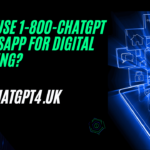Over the past decade, the rapid advancements in artificial intelligence (AI) have set the stage for a profound transformation across various industries. This ongoing AI revolution has been marked by significant milestones that demonstrate the increasing capabilities of AI technologies. Among these milestones, the release of GPT-4 stands out as a pivotal moment.
AI technologies have evolved from performing simple, rule-based tasks to understanding and generating human-like text, recognizing patterns, and making informed decisions. The development of natural language processing (NLP) has been a key factor behind these advancements. NLP allows machines to comprehend and interact with human language, bridging the communication gap between humans and computers.
GPT-4, or Generative Pre-trained Transformer 4, represents a substantial leap forward in the field of NLP. With its advanced architecture and training on vast amounts of data, GPT-4 has significantly enhanced the ability of machines to understand and generate contextually relevant and coherent text. This has unlocked new potentials for AI applications, from drafting emails and writing articles to providing customer support and generating creative content.
One of the most notable impacts of GPT-4 is its ability to perform tasks that require a deeper understanding of context and nuance, which were previously considered challenging for AI. This evolution not only improves the efficiency and effectiveness of business processes but also opens up new avenues for innovation and creativity.
As businesses continue to integrate AI technologies like GPT-4, the implications are far-reaching. The AI revolution is not just about smarter algorithms; it’s about redefining how we approach problems and create solutions. By harnessing the power of AI and specifically GPT-4, companies can gain a competitive edge, drive growth, and deliver unprecedented value to their customers.
What is GPT-4?
GPT-4, or Generative Pre-trained Transformer 4, represents a significant leap in natural language processing and artificial intelligence. Embracing an enhanced architecture compared to its predecessors, GPT-4’s design is grounded in deep learning methodologies that enable it to generate remarkably human-like text. At its core, GPT-4 employs a transformer-based model, which capitalizes on an extensive network of neuron-like nodes to process and produce coherent language responses.
A notable advancement of GPT-4 over previous versions, such as GPT-3, is its increased model size and depth. With billions of parameters, GPT-4 surpasses GPT-3’s capability to interpret and generate text with higher accuracy and contextual relevance. This enlargement allows it to grasp intricate nuances and provide responses that are more aligned with human thought processes. The expanded model size and improved architecture substantially enhance GPT-4’s natural language understanding capabilities.
Moreover, GPT-4 is trained on a diverse and extensive dataset, encompassing a wide array of text sources gleaned from the internet, books, and various other mediums. This vast training data facilitates the model’s ability to comprehend context, idiomatic expressions, and diverse linguistic patterns, rendering it more proficient in producing sophisticated and contextually appropriate text.
The key allure of GPT-4 lies in its ability to generate compelling, human-like text. By leveraging deep learning algorithms, the model analyzes text for context and semantic meaning, enabling it to provide responses or generate content that closely mirrors human expression. This capability extends to various applications, ranging from drafting emails and articles to more complex tasks like coding and problem-solving.
Through these innovations, GPT-4 not only advances the field of AI but also opens up new possibilities for integrating natural language processing into business and everyday applications. Its sophisticated architecture and deep learning foundation herald a new era in which AI can seamlessly assist and augment human activities with unprecedented proficiency.
Transforming Customer Service
In the realm of customer service, GPT-4 has emerged as a pivotal technology, significantly transforming how businesses interact with their clientele. One of the primary applications is in the development of sophisticated chatbots and virtual assistants. These automated solutions leverage the advanced natural language processing capabilities of GPT-4 to handle a myriad of customer inquiries with a high degree of accuracy and personalization.
Take, for instance, the implementation of GPT-4 powered chatbots in large-scale retail operations. These chatbots are capable of understanding complex queries and providing contextual, relevant responses that mimic human interaction. This level of sophistication not only enhances customer satisfaction but also allows service teams to redirect their focus to more complex issues, thus optimizing overall efficiency.
In addition, virtual assistants powered by GPT-4 are being integrated into financial services, where they assist customers with tasks ranging from balance inquiries to personalized financial advice. By utilizing the predictive analytics capabilities of GPT-4, these systems can forecast customer needs and preferences, offering proactive service that significantly enhances user engagement and loyalty.
The benefits of integrating GPT-4 into customer service extend beyond merely improving interactions. One notable advantage is cost reduction. With a virtual assistant handling the bulk of routine questions, companies can reduce the need for large customer support teams, thus lowering overhead costs. This technology also offers unmatched scalability, making it easier for businesses to manage fluctuations in customer service demand without sacrificing service quality.
Enhanced customer engagement is another significant benefit. GPT-4 enables businesses to deliver personalized experiences that resonate with customers on a deeper level. This level of engagement fosters stronger relationships, leading to improved retention rates and increased customer lifetime value.
In summary, the integration of GPT-4 in customer service is not just a technological advancement but a strategic move towards achieving greater efficiency, cost-effectiveness, and customer satisfaction. As businesses continue to harness the power of GPT-4, the landscape of customer service is set for a remarkable evolution.
Enhancing Content Creation and Marketing
In the rapidly evolving landscape of digital marketing, GPT-4 stands out as a game-changer for content creation and marketing efforts. Businesses globally capitalize on GPT-4’s advanced natural language processing capabilities to streamline their content generation processes. For instance, companies leverage GPT-4 to create compelling blog posts, engaging social media content, and persuasive email marketing campaigns. The enhanced capability of GPT-4 in understanding context and generating human-like text enables marketers to produce high-quality content efficiently.
One compelling case study involves a major e-commerce platform that harnessed GPT-4 to generate blog content aimed at improving customer engagement. The platform experienced a significant rise in organic traffic, with GPT-4 aiding both in content creation and in search engine optimization (SEO) strategies. By integrating relevant keywords seamlessly into informative content, GPT-4 helps enhance the visibility of webpages, ultimately driving more potential customers to the site.
Moreover, GPT-4 proves invaluable in the domain of social media content creation. A prominent fashion retailer utilized GPT-4 to produce captivating social media posts tailored to various audiences. The ability of GPT-4 to tailor content to different demographic preferences while maintaining a consistent brand voice greatly boosted the retailer’s social media engagement metrics. Similarly, email marketing campaigns benefit from GPT-4’s precision in crafting personalized messages, thereby enhancing open and conversion rates.
Idea generation is another area where GPT-4 shines. It acts as a creative partner, offering businesses a reservoir of content ideas swiftly. This feature supports marketing teams in brainstorming sessions, fostering collaborative innovation, and ensuring a steady stream of fresh, relevant content.
Additionally, GPT-4 aids in content customization, catering to specific audiences with personalized messages that resonate deeply. This customization extends to style, tone, and format, ensuring that the brand voice remains consistent across diverse content platforms. As a result, businesses can maintain a cohesive presence that builds trust and brand loyalty.
In summation, GPT-4 revolutionizes content creation and marketing by enhancing efficiency, fostering creativity, and aiding in SEO strategy, thus enabling businesses to maintain a strong, consistent brand voice while engaging effectively with their audience.
Optimizing Supply Chain and Operations
In today’s dynamic business environment, the advent of GPT-4 presents transformative opportunities for optimizing supply chain management and operations. By harnessing the power of advanced predictive analytics, GPT-4 is reshaping traditional methodologies, thereby enhancing efficiency and reducing operational costs. Leading businesses are increasingly leveraging GPT-4 to forecast demand with remarkable accuracy, ensuring that inventory levels are closely aligned with market needs.
For instance, retailers are utilizing GPT-4 to analyze vast datasets encompassing past sales figures, market trends, and seasonal variations. By doing so, they can forecast future demand with unprecedented precision, inevitably leading to more informed decision-making and strategic planning. This capability not only mitigates the risk of overstocking or stockouts but also provides a significant competitive edge in the increasingly fast-paced marketplace.
Further, GPT-4’s integration into inventory management systems allows for real-time monitoring and optimization. Businesses are using these AI-driven insights to maintain optimal stock levels and streamline their logistics operations. For example, a multinational corporation might employ GPT-4 to assess and predict inventory turnover rates across various regions, thereby adjusting supply chains accordingly to ensure timely product availability.
The logistics sector also benefits substantially from GPT-4’s predictive prowess. Through nuanced analysis of traffic patterns, weather forecasts, and geopolitical factors, transportation companies can optimize delivery routes, reduce fuel consumption, and improve overall delivery times. This not only enhances customer satisfaction but also contributes to significant cost reductions.
Moreover, GPT-4 bolsters decision-making processes within supply chains. By simulating various scenarios and predicting their potential outcomes, this AI tool aids managers in navigating complexities and uncertainties. Be it adjusting supplier partnerships or reconfiguring logistics networks, GPT-4 equips businesses with the insights needed for agile and resilient operations.
In essence, GPT-4 is proving to be an invaluable asset in revolutionizing supply chain and operational strategies. Its predictive analytics capabilities are helping businesses to anticipate challenges, optimize resources, and maintain a competitive edge in an ever-evolving market landscape.
Innovation in Product Development
Companies are increasingly turning to GPT-4 to revolutionize their product development processes, gaining a competitive edge in today’s fast-paced market. One remarkable application of GPT-4 involves utilizing its advanced capabilities in brainstorming sessions. By feeding the AI vast amounts of data and problem statements, product teams can generate a wide array of innovative ideas that might not have surfaced through traditional means. This AI-driven ideation process not only expands the creative potential but also enhances the efficiency of conceptualizing new products.
Furthermore, GPT-4 excels in the research phase of product development. Its ability to collate and synthesize information from a plethora of sources allows teams to access deep insights rapidly. From identifying market trends to understanding consumer behavior, GPT-4’s analytics prowess offers a granular perspective that human researchers may easily overlook. Businesses leveraging GPT-4 for preliminary product research can, therefore, make more informed decisions and avoid costly missteps.
Product design is another domain where GPT-4 is making significant contributions. With its advanced language models, GPT-4 can assist in drafting detailed design documents, creating prototypes, and even suggesting improvements based on historical data. Companies are using GPT-4 to simulate various design scenarios, reducing the iteration cycles and accelerating the overall development timeline. For instance, by integrating feedback loops into the AI, businesses can continually refine their designs, ensuring that the final product aligns more closely with user needs and market demands.
Additionally, GPT-4’s capability to analyze large datasets and deliver actionable recommendations is proving to be a game-changer. It enables organizations to shorten the time-to-market for new products by providing insightful predictions about potential obstacles and market reactions. By leveraging these insights, companies can streamline their development processes, reduce time-consuming trials, and allocate resources more efficiently.
In essence, the incorporation of GPT-4 in product development is driving unprecedented innovation across industries. It serves as a catalyst for rapid ideation, thorough research, and efficient design, thereby enabling businesses to bring their products to market with remarkable speed and precision.
Legal and Ethical Implications
The integration of GPT-4 into business operations brings forward a plethora of legal and ethical considerations. At the forefront, data privacy remains a significant concern. As businesses leverage GPT-4 to analyze, store, and utilize vast repositories of data, ensuring compliance with data protection regulations, such as GDPR and CCPA, is imperative. Failure to adequately safeguard personal information can lead to severe legal repercussions and breach of trust with customers.
Moreover, intellectual property issues arise with the deployment of GPT-4. The generation of new content, ideas, or even artistic works by the AI raises questions about ownership and authorship. Businesses must navigate the intricacies of intellectual property law to establish clear policies on how AI-generated outputs are attributed and protected. Ensuring that GPT-4 tools do not inadvertently infringe on existing intellectual property rights is essential to avoid potential litigation.
Ethically, the responsible use of AI-generated content remains paramount. Organizations must establish guidelines and ethical frameworks to prevent misuse, such as the creation of deceptive or harmful content. Transparency in the use of GPT-4 is critical; users should be informed when they are interacting with AI-generated material. This transparency fosters trust and allows for better accountability.
Additionally, biases inherent in training data can perpetuate and even exacerbate societal inequalities if not properly addressed. It is the responsibility of businesses to continuously audit and refine their AI models to promote fair and unbiased outcomes. Implementing robust ethical guidelines and fostering a culture of ethical AI usage within an organization can help in mitigating these risks.
Lastly, regulatory compliance is a cornerstone of deploying GPT-4 in business. Adhering to both current regulations and staying abreast of evolving legal standards ensures that the deployment of AI technologies is both lawful and ethical. Businesses must invest in ongoing legal consultations and compliance checks to navigate this complex landscape effectively.
Future Prospects and Conclusion
As we look towards the future, the prospects of GPT-4 in the business world appear increasingly promising. With ongoing advancements in artificial intelligence, GPT-4 will likely become more nuanced, capable of understanding context and intent with even greater accuracy. This improvement in comprehension will enable businesses to interact with their customers more effectively, offering personalized experiences that drive customer satisfaction and loyalty.
One of the significant areas where GPT-4 shows potential is in the automation of complex tasks that require a deep understanding of language and human-like interaction. For instance, customer service departments may leverage GPT-4 to handle more sophisticated inquiries, reducing the need for human intervention and ensuring swift resolution of customer issues. Additionally, the continued evolution of GPT-4 could lead to more advanced applications in sectors such as finance, healthcare, and legal services, where accurately processing and generating text-based information is crucial.
We can also anticipate GPT-4’s role in enhancing business intelligence functions. By processing vast amounts of data, GPT-4 can generate insights that help companies make more informed decisions. This capability could revolutionize strategic planning, market analysis, and trend prediction, ultimately leading to a more agile and responsive business environment. Furthermore, as GPT-4 integrates more seamlessly with existing business software and platforms, its utility will expand, making it a valuable asset across diverse business operations.
In summary, GPT-4 is poised to have a transformative impact on various business functions, from customer service and marketing to data analysis and strategic planning. The key points discussed highlight how GPT-4 is not just a tool for improving efficiency but also a driver of innovation and competitive advantage. As businesses explore new ways to incorporate GPT-4 into their strategies, the potential for growth and enhanced operational effectiveness is substantial. Readers are encouraged to evaluate how they can leverage GPT-4 within their own business frameworks, preparing for a future where AI-driven solutions become integral to success.






